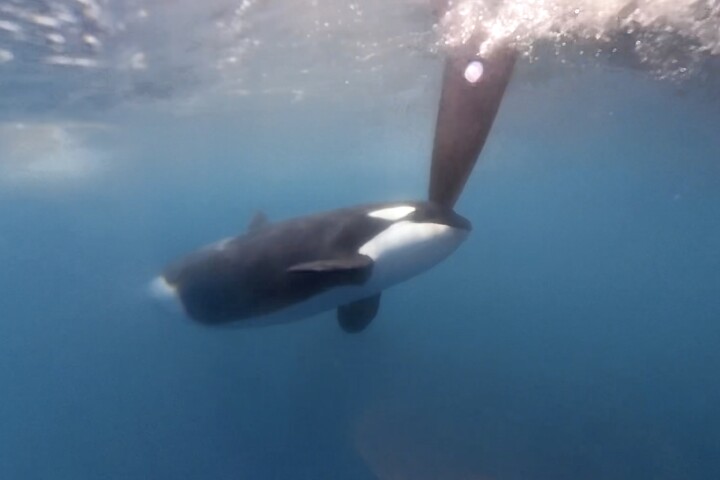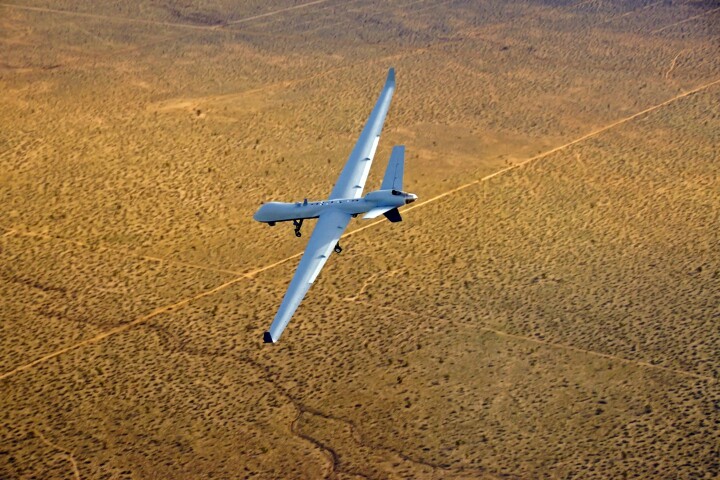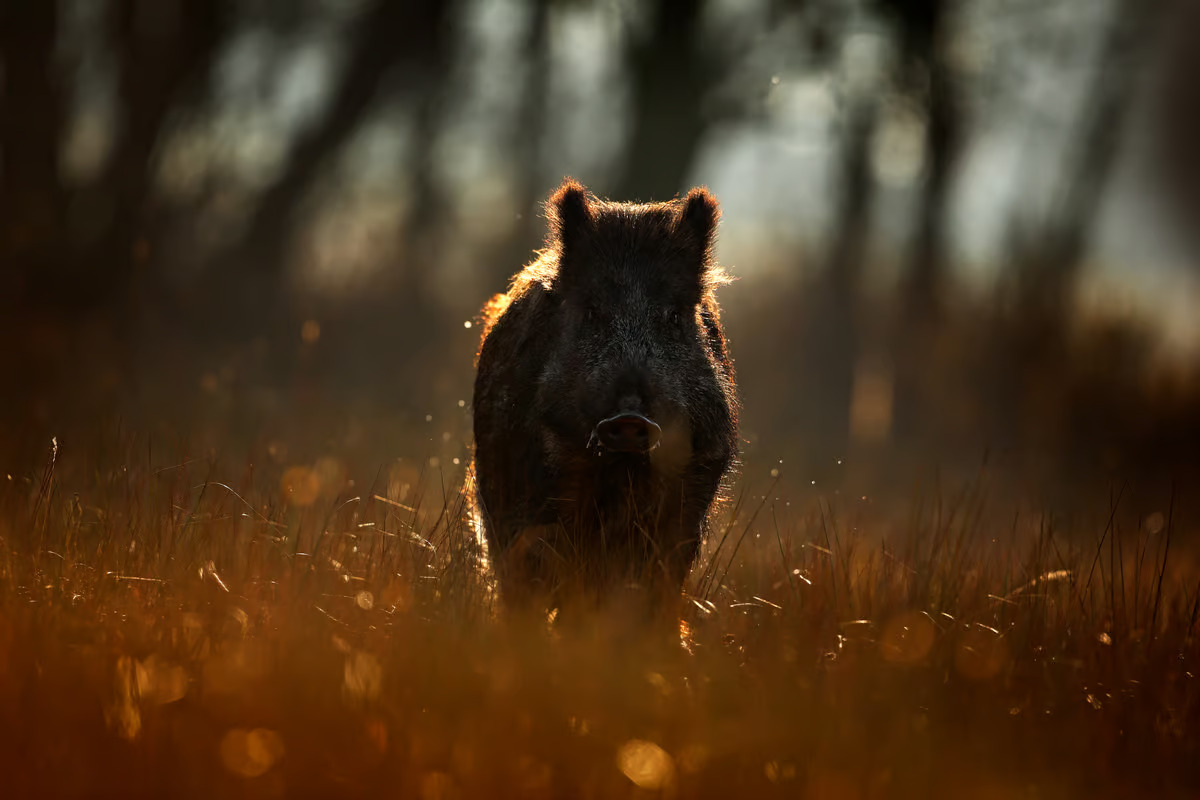 Coming to America: The hybrid super-pig has the potential to do billions of dollars’ worth of damage to crops. Depositphotos View 4 Images –
Coming to America: The hybrid super-pig has the potential to do billions of dollars’ worth of damage to crops. Depositphotos View 4 Images –
The US has been home to ‘normal’ wild pigs (Sus scrofa) for centuries, and the population is currently at around 6.9 million and concentrated in the southern states. But that doesn’t mean they haven’t been difficult to control or contain.
And they’ve also proved a headache for residents there too, perhaps best summarized by this tweet reply to singer-songwriter Jason Isbell, which instantly sparked hundreds of viral memes in 2019.
We can only imagine how Willie McNabb might feel now, learning that these troublesome hogs’ bigger, faster and more destructive Canadian cousins – widely known as super-pigs – are now threatening a US invasion.
Following more than a decade of research, University of Saskatchewan (USask) scientists have now found that these super-pigs are expanding their territory by a massive 9% each year, leaving a path of ecological and agricultural destruction in their wake. And they’re quickly closing in on the northern border.
“The growing wild pig population is not an ecological disaster waiting to happen – it is already happening,” said USask’s Ryan Brook, USask professor and lead researcher for the Canadian Wild Pig Project, a Canada-wide research program. He’s also been called the ‘Chairman of the boar’ – in recognition of the 14 years he’s dedicated to studying these animals.
So, why super-pigs? While the name has made some scientists roll their eyes, there’s some truth to the title. In the late 1980s, Eurasian wild boar were introduced for game farming and fenced-in hunting. But, as is usually the case, when market demand changed, they fell out of favor with farmers; some were reportedly released into the wild, while others are said to have made like Pablo Escobar’s cocaine hippos and made a break for it, in search of greener pastures.
And somewhere along the way they bred with domestic pigs, and in doing so found an ecological superpower: supreme cold tolerance and size thanks to the imported breed, and a high rate of reproduction like the farmed animals. An ecologist could describe this as a perfect storm, because as super-pig numbers rapidly increase, they easily adapt to new environments, free of the habitat constraints and migration challenges that most animals face.
An earlier study from USask researchers revealed that the super-pigs had spread rapidly across the vast country, from British Columbia to Ontario and Quebec, in just a few years.
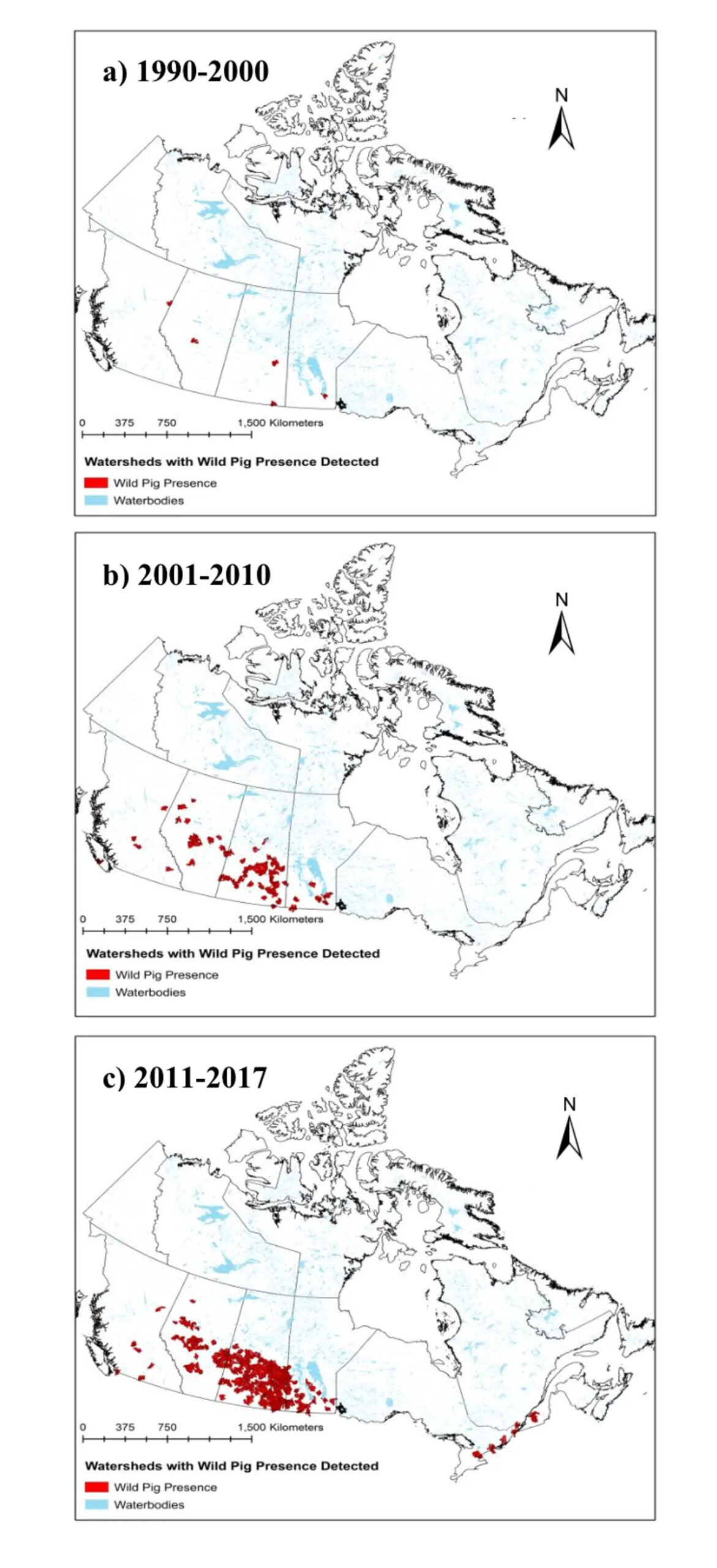
At the time, researcher Ruth Aschim highlighted their prolific breeding and destructive foraging as a potential catastrophe for agriculture and the environment.
“Wild pigs can cause soil erosion, degrade water quality, destroy crops, and prey on small mammals, amphibians and birds,” said Ruth Aschim, a PhD student who led the 2019 study. “One of the main problems is the rooting behavior; they upturn the soil because they like to eat the roots and tubers of vegetation. It’s essentially like a rototiller went through an area.”
Late last year, the USak team led by Brook – who has studied the population via aerial surveys and GPS satellite tracking since they first emerged – sighted 62,000 pigs covering a range of 750,000 sq km (290,000 square miles). This is, of course, likely a fraction of the actual population. The hybrid animals are also far more mobile than other breeds, able to travel hundreds of miles in the time it would taken wild pigs to cover a mile or two.
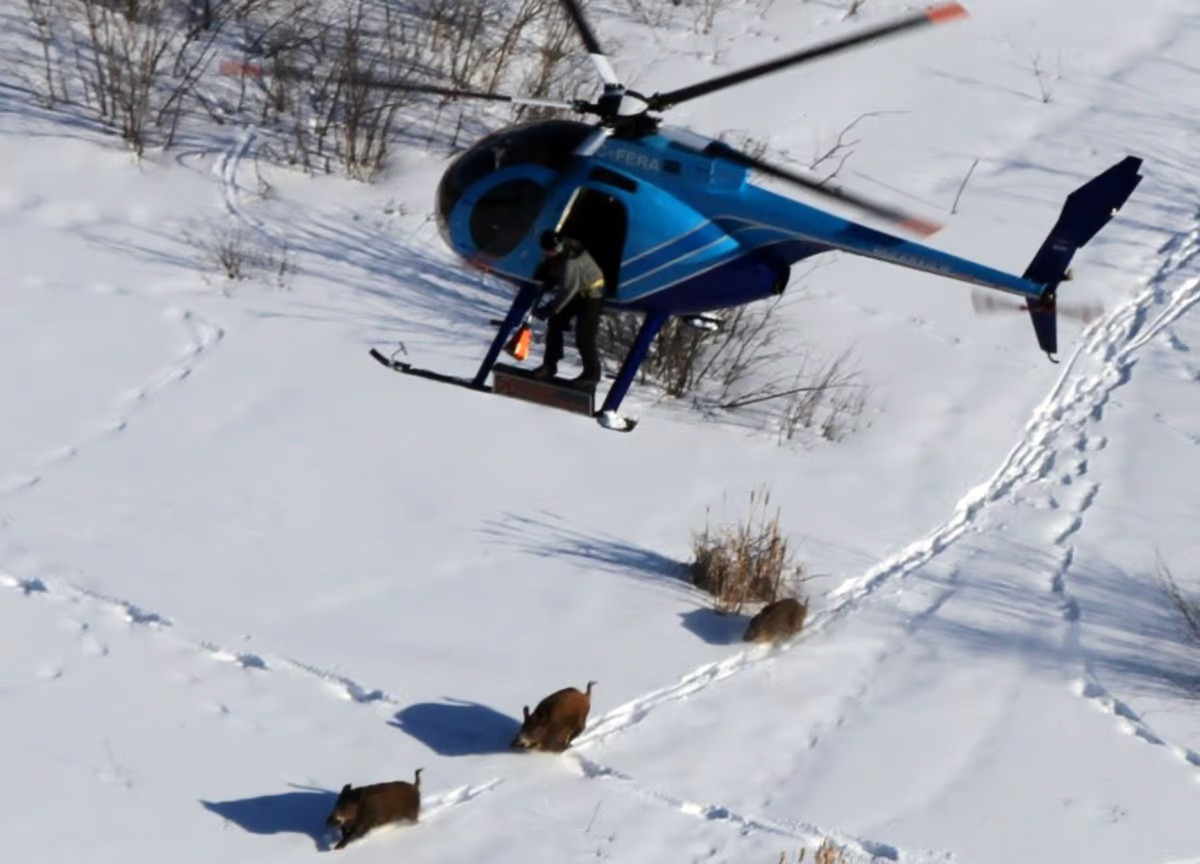
What’s more, the super-pigs can breed in any season, and sows will have a litter of around six piglets annually. The young are sexually mature in four-to-eight months, and not even a harsh winter can slow them down, as they thrive in the snow, living in ‘pigloos’ underground. They’re also not fussy eaters, and will demolish crops such as corn, wheat, sugar cane and canola, as well as native insects, birds, reptiles and other, smaller, mammals. This is on top of the destructive ‘renovating’ they do by rooting around in the soil.
The team also captured a 310-kg (683-lb) pregnant sow. It’d been thought that the super-pigs top the scale at around 115 kg (250 lb).
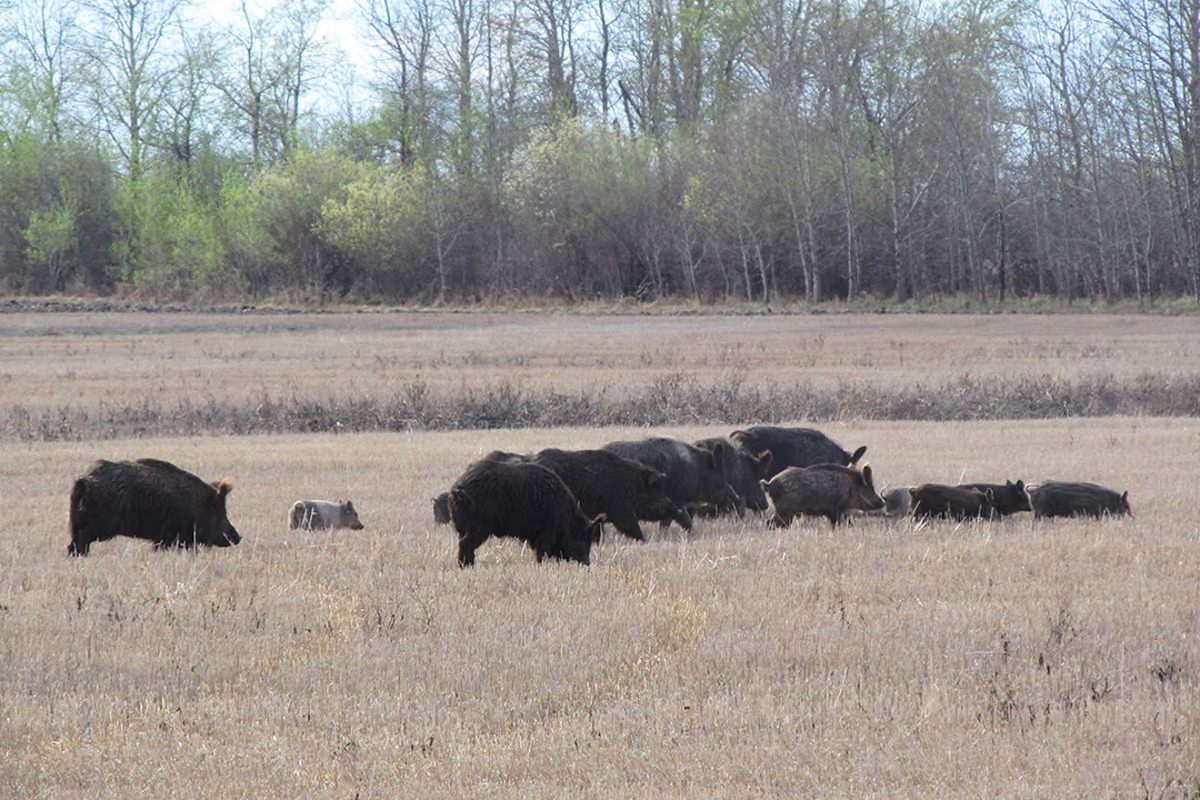
And the latest aerial surveys confirmed what the scientists had earlier predicted – the super-pigs have been seen on the Canada-North Dakota border, and just 28 km (18 miles) from Minnesota’s state line. The new research suggests that South Dakota, North Dakota, Montana and Minnesota are all facing this super-pig invasion, which could cost billions in agriculture losses.
“Wild pigs are so widespread that they are a major challenge to control in Canada and eradication is only possible with a comprehensive plan to deal with this highly efficient invasive species,” Brook said. “In Saskatchewan they are already posing significant risks to agriculture and livestock production. Our mapping of their expanding territory shows just how quickly they are spreading. This is a rapidly emerging crisis.”
As Brook told Field & Steam, “The US-Canada border is a political boundary, not an ecological one. There’s no wall or big fences. Most of the boundary is continuous farmland or forested landscapes… Animals can easily cross it, and [wild pigs] are likely to do exactly that.”
And while the super-pigs aren’t aggressive unless threatened, they do bring with them a sizeable pathogenic risk.“Disease is a huge concern with wild pigs,” Aschim said. “They’re reservoirs of not only African Swine Fever, but 39 other viral and bacterial diseases, as well as parasites. They can be transmitted to domestic livestock, wildlife, and humans.”
So, not great news. However the researchers hope that by being “good neighbors” and sounding the alarm, it’ll allow US authorities to get the jump on the super-pig problem – something that they say Canadian authorities were not able to do.
“Our results show the potential for rapid and uncontrolled expansion of wild pigs in the northern prairies of North America and helps guide efforts towards prudent monitoring as this species continues to expand its range,” the researchers wrote.
Australians, meanwhile, will be relieved to have vast oceans separating their continent from North America. The nation is still recovering from that time a feral pig drank 18 cans of beer, demolished a campsite and tried to fight a cow.
The study was published in the journal Biological Invasions.
Source: University of Saskatchewan View gallery – 4 images
–










